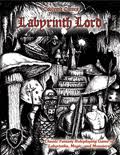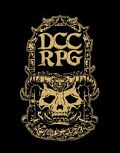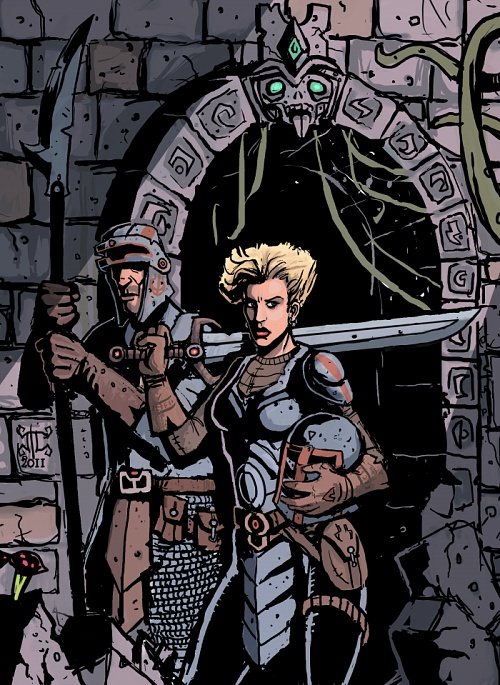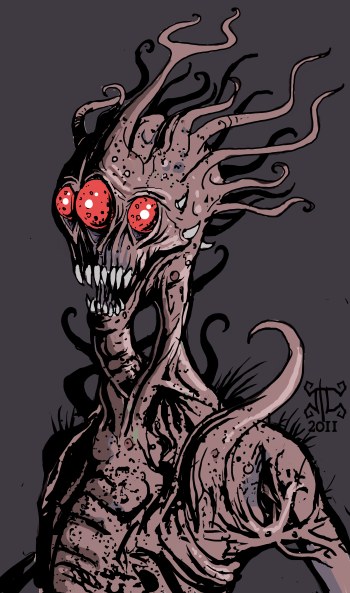As far as gaming is concerned, I prefer dungeon crawls. There's just something iconic about sending a fighter, cleric, thief and magic-user into a mouldering dungeon like some kind of pseudo-medieval special ops team to hack their way through monsters and steal treasure. Provided they can survive.
Of course, dungeon crawling is not much fun without opposition, so having plenty of monsters is important. Those early RPG books (particularly the monster-focused ones) provided me with a lot of imagination fuel as a kid and inspired me to draw. That love of monster books continues to this day and is obviously a major driving force behind this blog.
Here are some of my preferred dungeon crawling games. Many of them are functionally equivalent, so for me the artwork is often a selling point, as it has always been with gaming books. The monsters on this blog are designed with these kinds of games in mind, and should be easily translated for use in any of them.


One dungeon crawling game towers above all the others in my humble estimation. These are the Basic and Expert D&D rules published by TSR in 1981. They have enough rules structure to make it sufficiently "game-like" for me, while leaving plenty of room for improvisation. The rules are clearly explained as well (though it took my ten-year-old self a while to figure them out). They also have great cover/box art painted by by the legendary Erol Otus. In retrospect, this is also the last iteration of D&D from TSR that would have that amateurish, fanzine-like charm. I highly recommend finding a copy of these rules, either online or at in the used section of your local game store.

A number of other games capture some of the feel of these early boxed sets either through rules emulation or artistic and literary inspiration. These games have the advantage of currently being in print.
Labyrinth Lord, from Goblinoid Games is the closest to 1981 Basic and Expert D&D. This game is a retro-clone that utilizes the Open Gaming License (OGL) to loosely replicate the feel of the rules that inspired it, namely the 1981 Basic and Expert rules referenced above. Among the emulated rulesets, I'm partial to Labyrinth Lord for two reasons: it emulates my favorite rules and has great artwork.

Another OGL-based retro-clone is Swords & Wizardry from Mythmere Games. S&W harkens back to earlier incarnations of D&D (in this case the "Little Brown Books" or "White Box" D&D from 1974) and incorporates a number of changes that update and/or take creative license with the source material, but it's an enjoyable ruleset and in its earlier printings had an amazing cover by Pete Mullen (I guess I do judge books by their covers).

The Dungeon Crawl Classics RPG from Goodman Games is the latest addition to the roster of games that try to capture the look and feel of classic role-playing games from the late '70s and early '80s. DCCRPG is not a faithful emulation of one particular era of D&D rules. It is very much a game of its own that combines rules inspirations from many sources in an attempt to be faithful to the pulp fantasy literature that inspired fantasy role-playing games in the first place. This is a massive book and has a lot of artwork, including the last professional illustrations by one of my favorite vintage TSR artists - Jim Roslof.
These are some of the games that I find particularly enjoyable (though I don't play them all). The monsters on this blog are geared towards the style of games that the above books embody. Of course, there's nothing stopping you from translating them to any game you like. If there's one thing monsters love, it's finding new adventurers to devour.







